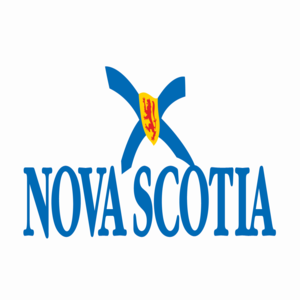watercourse
Type of resources
Topics
Keywords
Contact for the resource
Provided by
Formats
Representation types
Update frequencies
status
-

Buffer zones surrounding mapped watercourses and wetlands where forest activity is regulated on Crown land to maintain water quality and aquatic habitat.
-

The purpose of this dataset is to provide structural culvert locations along highways . The definition of a Structural Culvert is a culvert with span of 2 metres or greater. Drainage culverts have a diameter less than 2 metres and are not included in this dataset. Distributed from [GeoYukon](https://yukon.ca/geoyukon) by the [Government of Yukon](https://yukon.ca/maps) . Discover more digital map data and interactive maps from Yukon's digital map data collection. For more information: [geomatics.help@yukon.ca](mailto:geomatics.help@yukon.ca)
-

A shapefile of the Nova Scotia Automated Surface Water Quality Monitoring Network monitoring stations. The network was established in 2002 to assess near real-time water quality in surface waters across the province at five river stations and one lake station. The results are used to help manage water resources, determine baseline water quality in lakes and watercourses throughout the province, evaluate the impact of human activities on surface water, and assess long term trends in water quality. The following weblink connects to a Nova Scotia Department of Environment and Climate Change web map that includes the six monitoring station locations and an alternative method for downloading the same dataset: http://nse.maps.arcgis.com/apps/webappviewer/index.html?id=7ded7a30bef44f848e8a4fc8672c89bd
-

The field work for the inventory was carried out during the winter of 2004/2005 with the project delivered by the contractor in October 2005. Delineation was based on 1:10,000 black and white photography acquired by the City of Whitehorse in 2001. Mapping and DTM were available for this project based on the 2001 photography. Distributed from [GeoYukon](https://yukon.ca/geoyukon) by the [Government of Yukon](https://yukon.ca/maps) . Discover more digital map data and interactive maps from Yukon's digital map data collection. For more information: [geomatics.help@yukon.ca](mailto:geomatics.help@yukon.ca)
-

Features in the Hydrology - Line layer are representations of creeks, streams, and rivers for the City of Whitehorse. Data was modeled using the NENA NG9-1-1 GIS Data Template (NENA-REF-006. 2 -202 2 ). Distributed from [GeoYukon](https://yukon.ca/geoyukon) by the [Government of Yukon](https://yukon.ca/maps) . Discover more digital map data and interactive maps from Yukon's digital map data collection. For more information: [geomatics.help@yukon.ca](mailto:geomatics.help@yukon.ca)
-

Atlas of Canada National Frameworks data are standardized national coverages of commonly used geospatial datasets at the 1:1 000 000 scale. The Drainage Network Skeleton dataset is comprised of linear features: single line rivers, flow lines within waterbodies and ocean coastlines. Flow lines within waterbodies are virtual linear features representing the hydrological flow through area features (e.g. lakes, rivers and intermittent waterbodies). These flow lines complete the linear network where rivers would run through lakes, permitting hydrologic network analysis and cartographic generalization. This dataset is required for analytical applications. The coastline component of the Drainage Network Skeleton also delineates oceanic islands. The National Scale Frameworks Hydrology data consists of area, linear and point geospatial and attribute data for Canada's hydrology at a national scale. It provides a representation of Canada's surface water features, and data completeness reflects the content of the source, the original Vector Map level 0 (VMAP0) revision 4 hydrographic layers, except where revision editing has been performed. Key value-added characteristics include river flow direction, connectivity and the tagging of geographical name keys to selected rivers, lakes and islands included in the Concise Gazetteer of Canada. The Atlas Frameworks are a set of integrated base map layers which form part of a larger National Scale Frameworks data collection. These data have been compiled at a scale of 1:1 000 000 with the primary goal being to indicate correct relative positioning with other framework layers rather than absolute positional accuracy. Distributed from [GeoYukon](https://yukon.ca/geoyukon) by the [Government of Yukon](https://yukon.ca/maps) . Discover more digital map data and interactive maps from Yukon's digital map data collection. For more information: [geomatics.help@yukon.ca](mailto:geomatics.help@yukon.ca)
-

The Yukon Geological Survey (YGS) has compiled over 195 surficial geology maps into a standardized GIS format, providing approximately 80% coverage of the territory. The maps range in scales from 1:250,000 to 1:10,000 with spatial overlap between scales. The original maps were produced by various agencies, including the Geological Survey of Canada, YGS, Yukon Government, universities, and the City of Whitehorse. All original feature descriptions have been preserved and also converted to standardized values using the Yukon terrain classification system. The compilation includes 4 GIS datasets and supporting documents available for download via [YGS integrated data system](https://data.geology.gov.yk.ca/Compilation/33#InfoTab) (YGSIDS) or GeoYukon. A .lyr file is [provided](https://data.geology.gov.yk.ca/Compilation/33#InfoTab) to symbolize feature classes and differentiate overlapping maps at different scales. Additionally, there is a surficial geology map index. The polygon attributes captured include surficial material, texture, age, surface expression, and geomorphological processes. Line features include geological contacts, glacial limits, glacial landforms (cirques, arêtes, eskers, meltwater channels, moraines), and non-glacial landforms (faults, lineaments, landslides, escarpments). Point features include field station, fossil and sample locations, glacial landforms (erratics, kames, kettles, drumlins, flutings), permafrost features (pingos, palsas, patterned ground, thermokarst depressions), and other non-glacial landforms (landslides, tors). The map index provides information on each map publication such as author, map title, map scale, publisher. These data are valuable for land-use applications in the territory, including: mineral and placer exploration, geotechnical engineering, infrastructure planning, granular resource assessments, permafrost modeling, agricultural assessments, forest management, and biophysical or ecological land classification. Distributed from GeoYukon by the Government of Yukon. Discover more digital map data and interactive maps from Yukon's digital map data collection. For more information: [geomatics.help@yukon.ca](mailto:geomatics.help@yukon.ca)
 Arctic SDI catalogue
Arctic SDI catalogue